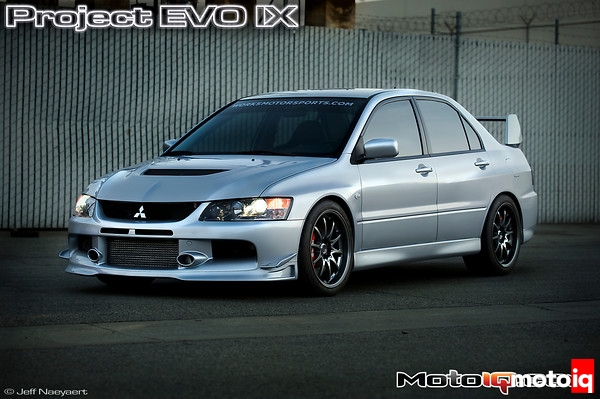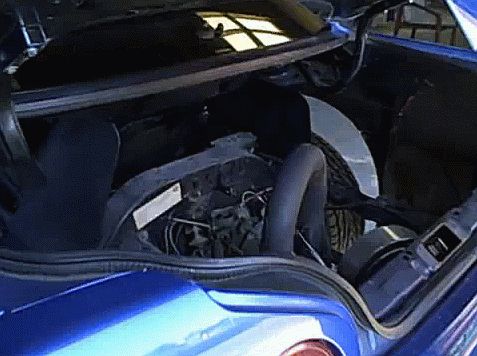,
For the rear suspension we used WORKS rear pillow ball mounts. The WORKS mounts do away with the factory stock squishy rubber mounts, replacing the rubber with a spherical bearing held in an anodized billet aluminum housing that bolts to the body. The bearing allows the suspension to articulate smoothly while ensuring that every bit of movement is controlled by the damper. Low speed control takes place at under two inches per second velocity and the stock rubber mounts can stretch and allow up to one inch of vertical shock shaft movement. With superior dampers that work well at these low velocities, it is easy to understand why solid high quality mounts are important.
Of course we cannot overlook the springs. After consulting with Robi on spring rates we chose 2.25″ Eibach ERS racing springs. Eibach ERS springs are available in a tremendous array of lengths and weights which makes a suspension tuners life much easier. We settled on 7″ long 550 in/lb front and a 650 in/lb rear springs with a 200 in/lb tender spring. These spring rates are nearly 3x stiffer than stock but are still considered to be on the soft side for track use. The tender springs are bottomed out with the cars weight on them but they come into play by helping keep the car’s inside wheels on the ground in real hard cornering. This helps forward traction on the exit of turns. Although a stiffer spring rate is often used on the track, we feel that a chassis without a cage cannot easily make use of rates much higher than this. If the springs are too stiff then the cageless chassis flexes and becomes a giant undamped spring which can contribute to tire shock. Robi’s philosophy is to use soft compliant springs to allow the suspension to work and to limit roll by using stiff anti sway bars and by raising the front suspensions roll center.
 |
| Robispec sway bars have a wide range of adjustability. This helps set up the car quickly at the track. |
When it came to anti sway bars we naturally used Robispec adjustable units. The Robispec bars are 25mm up from the stock 24mm for the front bar with two adjustment holes and 26mm up from the stock 22mm for the rear bar with 4 adjustment positions. The front bar can be up to 80% stiffer than stock depending on which hole it’s adjusted to and the rear bar up to 140% stiffer depending on which hole is used. The Robispec bars come with urethane mounting bushings and the rear bars come with a heavy duty chassis bracket that better withstands the stress of the thicker bar. The bars’ also have adjustable end links featuring spherical bearings rather than the stock plastic ball and socket joints, important to get rid of bar preload after corner weighing.
When setting up a car at the track, unless you have a big pit crew, it’s hard to effect a spring change to change the balance of the car in the time allotted between run groups. However it is pretty easy to adjust the sway bars to change the car’s balance. Setting the car up siffer in the rear and softer in the front increases oversteer or decreases understeer. Stiffening the front bar and softening the rear decreases oversteer or increases understeer.
 |
| Whitelines sway bar end links are very strong and stuff with bearings instead of bushings for razor sharp response. They are also length adjustable to eliminate sway bar preload. |



